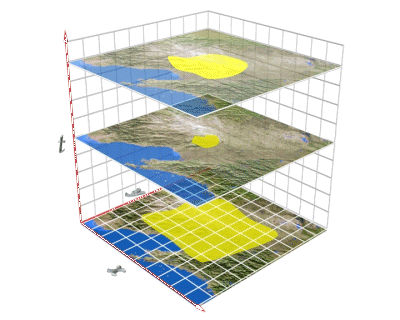
Many web sites use maps delivered as non-interactive images. With the development of web-enabled mapping, new methods of presenting and contextualising archaeological and historical data are becoming available. However, most current examples are static views of contemporary framework data or specific time slices, and do not provide interactivity relating to the time dimension, which is so important to archaeology and related disciplines.

In this article I look at some of the advantages of time-enabled interactive mapping and map animation in providing educational experiences to museum visitors and the web-browsing public. These will be illustrated through three example applications of the TimeMap methodology developed at the University of Sydney Archaeological Computing Laboratory: 1. the Sydney TimeMap kiosk at the Museum of Sydney; 2. an embedded Java mapping applet developed for MacquarieNet, a major Australian online educational encyclopaedia; and 3. the metadata clearinghouse mapping applet developed for the Electronic Cultural Atlas Initiative, Berkeley.
In each of these examples, a wide range of resources are delivered through a time-enabled map interface which accesses live database data rather than pre-structured curated presentations of data. This flexibility brings its own challenges in providing intuitive pathways and appropriate levels of detail in response to free-ranging user enquiries. The paper outlines some of the approaches I have adopted to resolve these issues.
Go to article Table of Contents
* Ian Johnson
Director, Archaeological Computing Laboratory
Archaeology A14
University of Sydney NSW 2006
Australia
Email johnson@acl.archaeology.usyd.edu.au
http://www.timemap.net
Last updated: Wed Sep 11 2002
© Author(s). Content published prior to 2013 is not covered by CC-BY licence and requests for reproduction should usually go to the copyright holder (in most cases, the author(s)). For citation / fair-dealing purposes, please attribute the author(s), the title of the work, the Internet Archaeology journal and the relevant URL/DOI.